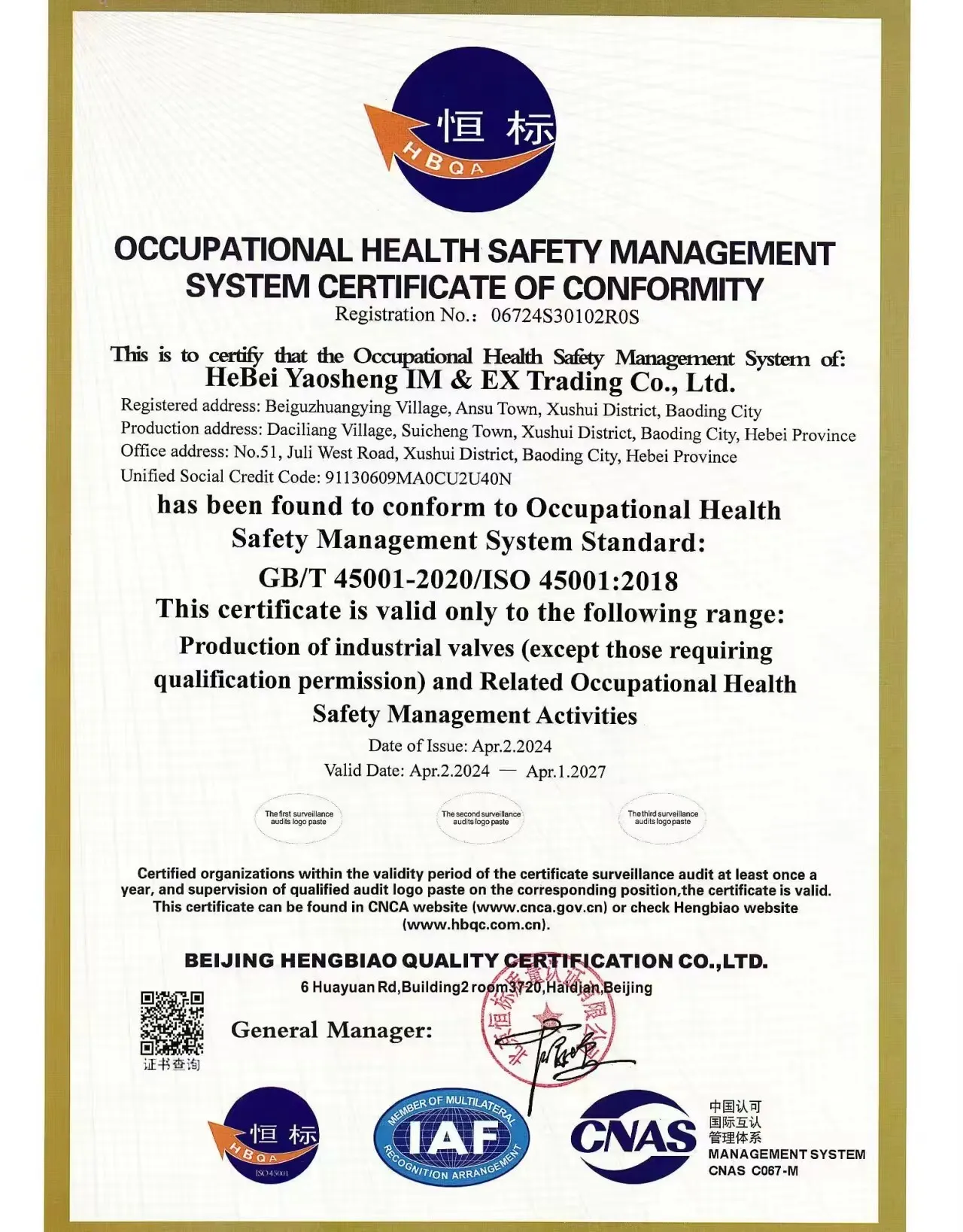long stroke electric actuator
Understanding Long Stroke Electric Actuators Features and Applications
Long stroke electric actuators are essential components in various industrial applications, primarily known for their ability to convert electrical energy into mechanical motion. These devices are designed to produce linear movements over extended distances, making them suitable for tasks that require precise control and significant travel. As automation continues to dominate modern manufacturing and engineering domains, understanding the features, benefits, and diverse applications of long stroke electric actuators becomes increasingly important.
Key Features of Long Stroke Electric Actuators
Long stroke electric actuators are characterized by their length of travel, which can often exceed several meters. This feature allows them to perform tasks that require long-range movement, unlike standard electric actuators typically designed for shorter strokes. Some key features include
1. High Precision Long stroke electric actuators are engineered for precise control over positioning. This precision is vital in applications where even slight deviations can lead to inefficiencies or product defects.
2. Programmable Control Most modern long stroke electric actuators come with programmable features, enabling users to set specific movement patterns, speeds, and positions. This programmability enhances versatility, allowing for diverse operational scenarios.
3. Robust Design These actuators are built to withstand harsh industrial environments. With strong materials and protective casings, they resist dust, moisture, and other environmental factors that could impair functionality.
4. Feedback Mechanisms Many long stroke electric actuators are equipped with advanced feedback systems, such as encoders or sensors. These mechanisms provide real-time data about position and speed, facilitating enhanced control and monitoring during operations.
5. Energy Efficiency Compared to traditional pneumatic and hydraulic systems, electric actuators generally consume less energy, making them a more sustainable choice for automation. Their efficiency has become increasingly important as industries seek to reduce their carbon footprint.
Applications of Long Stroke Electric Actuators
The versatility of long stroke electric actuators allows them to be employed in a wide range of applications, including but not limited to
1. Manufacturing and Industrial Automation These actuators play a crucial role in assembly lines, where they are used for tasks such as positioning components, sorting products, and packaging. Their long stroke allows them to reach multiple points within a workspace, enhancing overall efficiency.
long stroke electric actuator

2. Robotics In robotic applications, long stroke electric actuators provide the necessary movement for robotic arms, enabling them to perform tasks like picking, placing, or manipulating objects at various distances. This capability is critical in sectors such as logistics and manufacturing.
3. Aerospace and Defense In the aerospace sector, precision is paramount, making long stroke electric actuators ideal for applications like flap control systems or landing gear deployment. Their reliability and accuracy ensure that safety standards are met.
4. Medical Equipment Long stroke electric actuators are found in various medical devices, ranging from surgical tables to robotic-assisted surgeries. Their smooth operation and precision enhance the capabilities of medical professionals, ultimately improving patient care.
5. Renewable Energy These actuators are integral to the functioning of solar panel trackers and wind turbine pitch systems, where adjusting the angle of solar panels or turbine blades is crucial for maximizing energy generation.
Advantages of Using Long Stroke Electric Actuators
The switch from traditional mechanical systems to long stroke electric actuators brings several advantages
1. Reduced Maintenance Electric actuators typically require less maintenance than their hydraulic or pneumatic counterparts, leading to lower operational costs over time.
2. Enhanced Accuracy With digital control and feedback loops, these actuators offer unparalleled accuracy in positioning, which is critical in many modern applications.
3. Compact Design Long stroke electric actuators can often achieve significant movement in a compact form factor, allowing for easier integration into tight spaces.
4. Noise Reduction Operating quietly, electric actuators contribute to a more pleasant work environment, especially in settings where noise levels must be minimized.
Conclusion
Long stroke electric actuators represent a significant advancement in motion control technology, offering numerous benefits over traditional systems. Their precision, energy efficiency, and adaptability make them indispensable in a variety of industries, from manufacturing to healthcare. As technology continues to evolve, the role of long stroke electric actuators will likely expand, further solidifying their place in the future of automation and control systems. By understanding their features and applications, businesses can make informed decisions when integrating these powerful devices into their operations.
-
Why Choose a Brass Gate Valve for Superior Performance and DurabilityNewsMay.09,2025
-
Reliable Flow Control Begins with a High-Performance Flange Butterfly ValveNewsMay.09,2025
-
Reliable and Rugged: Why the Lug Type Butterfly Valve Is Dominating the MarketNewsMay.09,2025
-
Manual Gate Valve: A Comprehensive Look at Performance, Durability, and DesignNewsMay.09,2025
-
Engineered for Precision: Why the Stainless Ball Valve Sets a New StandardNewsMay.09,2025
-
Ductile Iron Valve: The Perfect Solution for Reliable Flow ControlNewsMay.09,2025
-
Compact Powerhouse: Why the Wafer Type Butterfly Valve Is an Industry FavoriteNewsMay.09,2025




